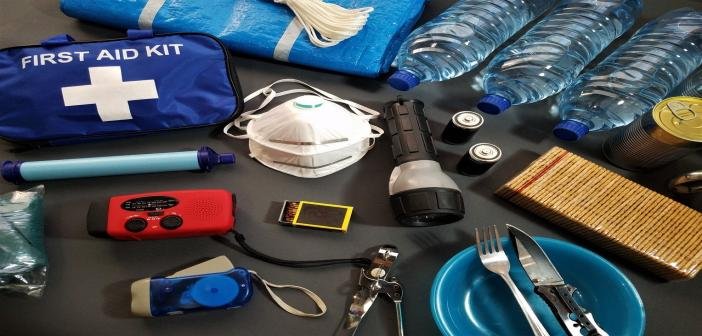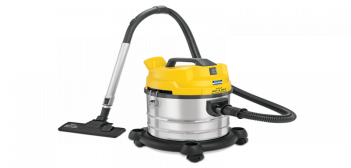3 Ways How Pre-made Survival Kits Can Jeopardize Your Life
1Disaster preparedness and survival are increasingly becoming important every day. However, most people ignore the pressure and don’t go for the best survival kit from a quality survival kit manufacturer.
Unprepared With Bad Quality Supplies
FEMA estimates that 42% of Americans are without an emergency plan. They also estimate that 37% are living with no emergency supplies. Now here's the kicker. FEMA declared 81 disasters in 2010 in the US alone.
Therefore, it can be safely assumed that in nearly 80 disasters, almost half of the people were clueless and didn’t have any plan or emergency survival kit.
To complement insult to injury, if we had any planning or preparation, several of the preparedness kits are junk; especially the pre-made kits.
Cheap Survival Kit = An Open Threat to Your Life
Cheap and highly inexpensive emergency survival kits endanger people and make them believe that they are optimally prepared. Look, your life is not a TV show. You need to understand that it's a disaster circumstance. You are going to be in a hostile environment. You may end up in a hurricane of class 4, a nuke dirty attack, a tsunami, or a break down in the power grid.
At a time like this, do you really want a false sense of security? Can you wonder the moment when you need emergency stuff and they break down on you?
So what I want to do is share with you a few very real and solid reasons why a pre-made kit is a dangerous idea. Then I will end up by explaining to you the idea of preparing a kit of your own. So let's dive in.

Danger No. 1: Not Enough Essentials
Let's begin with food. The kit carrying your food is not enough for even a single person to keep him hydrated for a complete 24 hours. Caloric intake and food storage in the kit is critical. An average person needs nearly 2500 calories each day. Barely a simple bar of 3,600 calories would suffice. However, there are some disaster kits that contain 800 calories per individual per day. It's simply laughable.
Another example can be of water. An adult person can lose nearly 80 ounces of water per day. So why some survival kits manufacturers only offer 8 ounces of water with their kit?
So how can you get rid of these shortcomings? Start constructing your kit with your Protein bars. Spare a little amount on a Life Straw so that you can consume water from streams, lakes, and puddles for days or even weeks. Then forget the 8-ounce bag that would last for only 5 minutes.
Once you realize and overcome these imperfections, you are now ready to spend twice the bucks for 1/10th the total value.
Now let's move to danger no. 2.
Danger No. 2: Cheaply Made Contents
If you buy a ready-made kit, ask these questions to yourself.
- Does the inside stuff look flimsy and cheap?
- Does it seem like it is not properly sewn as it should be?
- When the package arrives, are there broken items in the box?
- Have the kits emptied out?
- Does the overall quality is flat or look cheap?
A few survival kits contain a tiny radio that looks similar to a toy. Others may include a multi-tool. In either case, these will always be the cheapest ones. I've heard of people who have had tools like a wire cutter fall apart during their very first use. Other cheap survival kit tools have included flimsy ponchos and blankets or whistles.
The lack of quality control in these things is surprising. Let's face it. With cheap stuff like this, you have to take these kits out of your safety equation. However, danger no. 3 enlightens you with some more bothersome realities.
Danger No. 3: Did You Get What You Ordered?
There is a reason why pre-made cheap emergency survival kits are not worth it. They either carry the wrong contents, or the ordered items don't exist. Some people have found their kit with water and food. But the survival blanket that was supposed to be in the kit wasn't there. In other cases, entirely different items were in the kit. The items shipped didn't match what was in the advertisement.
The Alternative: Build Your Own Kits
Making your own survival kit doesn't begin with gear. It begins with you. By sparing some time to grasp what is in your kit, you will help yourself down the road.
One way to get started is, to begin with, a small specialized kit. For example, a small-sized medical kit may be a wonderful beginning point for you.
Then each week, pick another part and build a kit for that. Smaller survival kits can be specialized for one specific purpose. Then you simply carry these small kits around in your bug out bag. If you are looking for something to put your kit contents in, then check out the Gear Pods.

Image: themanual.com
Gear Pods are light and transparent so you can see the contents, while they are relatively inexpensive. Besides, if you wish to extend your Gear Pod, you can screw one with the other end and you are good to go. Another advantage with Gear Pods is you are free to "extend" them and shape them longer.
Kit Contents: At Your Local Stores
Take a look at the contents that are typically in these survival kits. You'll find the same stuff in the stores you visit every day. Not only that, but many survival kit reviewers suggest that it's a better idea to make your own as well.
Last Word
At the end, when it comes down to it... making your own survival kit makes a lot of sense. You avoid unreliable content. You can upgrade your kit at will, and you gain the confidence that your kit is flawless.







0 Comments